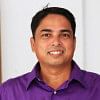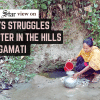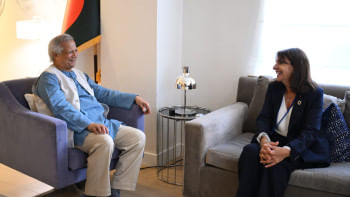Apparel factories cut groundwater use with rain, new tech

Local garment and textile factories have sharply reduced groundwater use in recent years by adopting rainwater harvesting and advanced washing and dyeing technologies, a shift driven both by environmental concerns and by pressure from global clothing retailers.
The International Finance Corporation's PaCT programme shows that more than 338 Bangladeshi factories have together reduced freshwater use by 25 million cubic metres annually, while cutting wastewater discharge by 21.08 million cubic metres through the adoption of efficient technologies.
A decade ago, washing a kilogramme (kg) of denim fabric typically consumed nearly 200 litres of underground water. Today, that figure has fallen to 50-53 litres, according to industry insiders.
With the latest technologies, it is possible to bring consumption down further to 25-30 litres, they say.
International brands are demanding lower water use across their supply chains, while local apparel exporters are also moving towards efficiency as groundwater levels in some areas fall by around three metres annually due to over-extraction.
These days, factories deploy harvested rainwater for non-critical purposes such as toilet flushing, while refined water is still required for fabric washing and dyeing. Even so, the shift has significantly reduced the overall use of underground water.
For instance, Narayanganj-based Fakir Apparels Ltd now uses 65-68 litres of water to wash one kg of fabric after installing new technology and rainwater harvesting, said its Chief Operating Officer, Bakhtiar Uddin Ahmed.
"Rainwater currently meets about 30 percent of the company's water demand," he said, adding that buyers are pressing for even greater reductions in washing and dyeing of fabrics. The company plans to install advanced technologies to reduce water consumption further.
Square Textiles has also cut usage, bringing it down to 53 litres per kg of denim from 70-80 litres a few years ago, said Sayeed Ahmad Chowdhury, director of operations. At one point, the company even used 120-150 litres of water for one kg of fabric.
"Reuse and recycling of water, along with rainwater harvesting, also helped reduce overall water consumption in our mill in Habiganj," he said.
Plummy Fashions Ltd, regarded as one of the greenest factories in the country, saves about 40 percent of its water through rainwater harvesting, though Managing Director Fazlul Hoque noted that harvested rainwater cannot be used directly for washing and dyeing.
"With advanced systems," he said, "water use could be brought down to as little as 20 litres per kg of fabric."
According to Ananta Ahmed, managing director of 360 Solution Ltd, green garment factories in Bangladesh can save around 40 percent of water through rainwater harvesting.
"In some cases, advanced technology can enable reductions of up to 90 percent in groundwater consumption for washing and dyeing," noted Ahmed, also a faculty member of the US Green Building Council, the body that certifies green factories under the Leadership in Energy and Environmental Design (LEED) programme.
Bangladesh is now recognised as a global leader in sustainable garment production, boasting 263 LEED-certified factories. Of these, 111 are rated Platinum and 133 Gold, with 68 ranked among the world's top 100 highest-rated LEED factories.

 For all latest news, follow The Daily Star's Google News channel.
For all latest news, follow The Daily Star's Google News channel. 








Comments